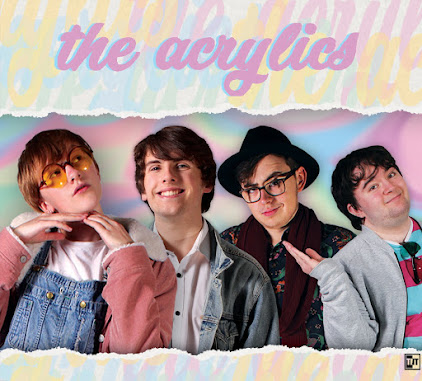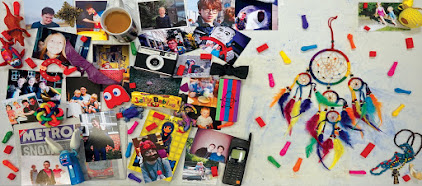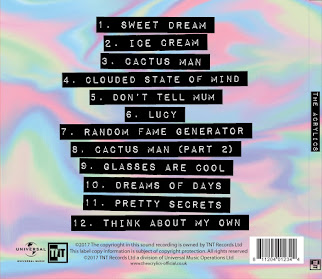We organised it like it was our main shoot, creating a shootboard to organise ourselves before the shoot, and at the same time getting some practice in creating shootboards, which paid off when working on the more important main shoot shootboard. However, in the interest of time, we didn't do a full shootboard- it was more of a schedule, that served the same basic functions as a shootboard.
We got to see how we all worked in all aspects of the shoot, rather than just acting as with the previous rehearsal. We got to use the camera and actually capture some footage, work on the lighting both in the gallery and with the adjustment rod on the main set, get the sound system up and running, and so on. However, we did also get to practice acting more as well, this time with lighting and more costume and props, and all viewed through the camera so that we could work on composition and framing and similar.
A good example of some test shoot footage, roughly edited to show what the final version might look similar to. Here, we have our final lighting for the 'Alice in Wonderland' set-up, which we worked on before filming this footage; plus, Noa is in her final costume, and we have most of the set prepared so that we can accurately frame and compose the shot. Noa is practicing her acting, while I film, and Jack directs. Click to play.
This was really helpful to us as it allowed us to practice everything we would be doing in the main shoot soon after wrapping up the test shoot. We learnt a few things about how to use the studio, and refreshed our knowledge on things we already did know. We figured out if the set and lighting looked good, and what the actors would look like performing in them. All of this has benefitted us and our project because we know we are on the right track.
Some of the 'Singing in the Rain' test footage. This was useful in that it showed us how we WEREN'T on the right track- the lighting was much too dark once we looked at it outside of the studio, despite how it appeared in real life and on the camera screen underneath the studio lights. Thus, we updated the lighting for the main shoot to include some more white, to better illuminate everything. Noa and Jack got to practice their performance, while I set up and monitored the camera. Click to play
The test shoot also benefitted the project in that we found out what we were doing wrong. This included shooting issues, such as how lighting looked once outside of the studio regardless of what we thought it looked like during shooting, as well as behind-the-scenes issues, such as how to most effectively and safely set-up, use, and pack up the studio equipment and lights. Luckily, however, we found out we were mostly fine on all fronts, and we didn't have any major accidents or mistakes or have to make any drastic changes.
Overall, I think the test shoot was great. It provided a condensed version of the shooting process, from pre-production and planning, to production and shooting, and even to post-production to some degree- while we didn't have time to do a full edit, given that our first main shoot day was the day after our final test shoot day, we did get to make small rough edits to see what certain sequences would look like, as well as review the footage for any obvious mistakes. It was a hugely beneficial step towards getting a good end product out of our project.






No comments:
Post a Comment